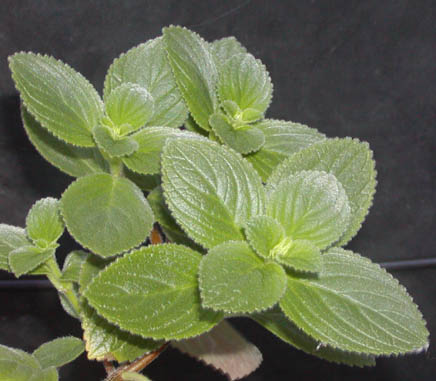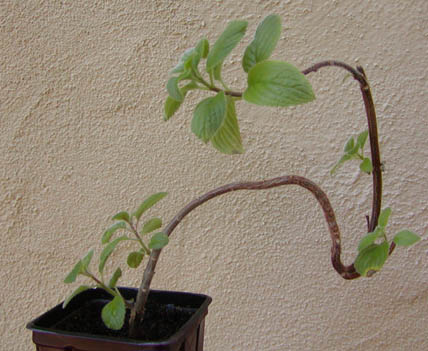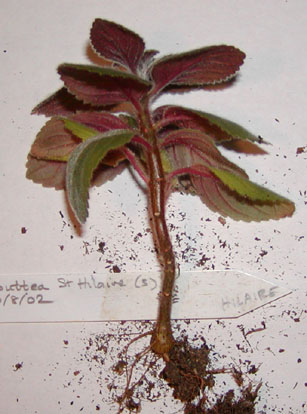Vanhouttea hilariana
This vanhouttea never bloomed for me. It grew to be a fairly large plant and survived several winters. The foliage was mildly attractive, but the plant had the standard vanhouttea trait of dropping most of its lower leaves, resulting in stems which were 80% bare.
In general, vanhoutteas and paliavanas are more vulnerable to cold than sinningias. Most will withstand 32 F [0 C] but not much colder than that. Vanhouttea brueggeri is just a bit hardier than the other species.


